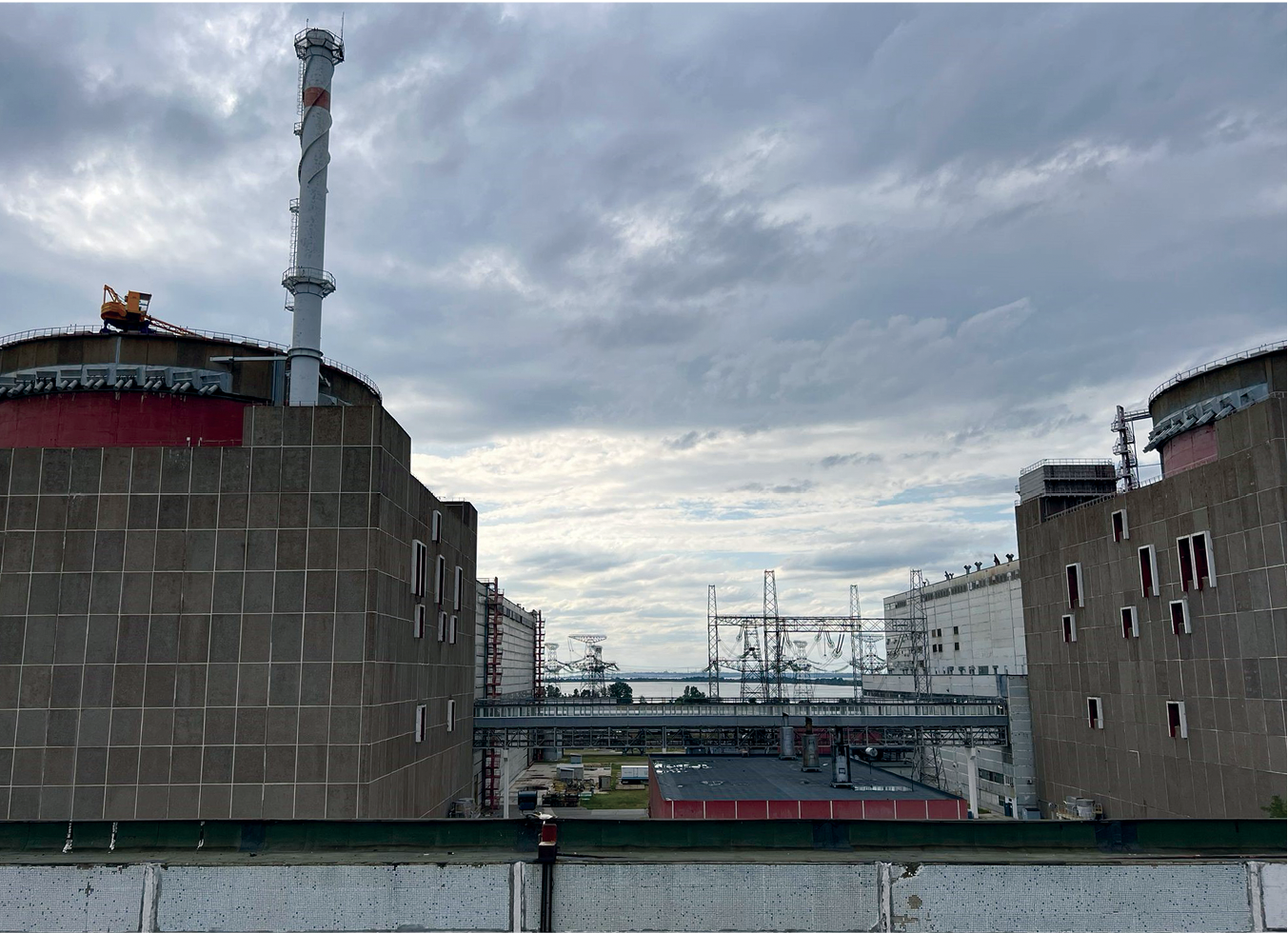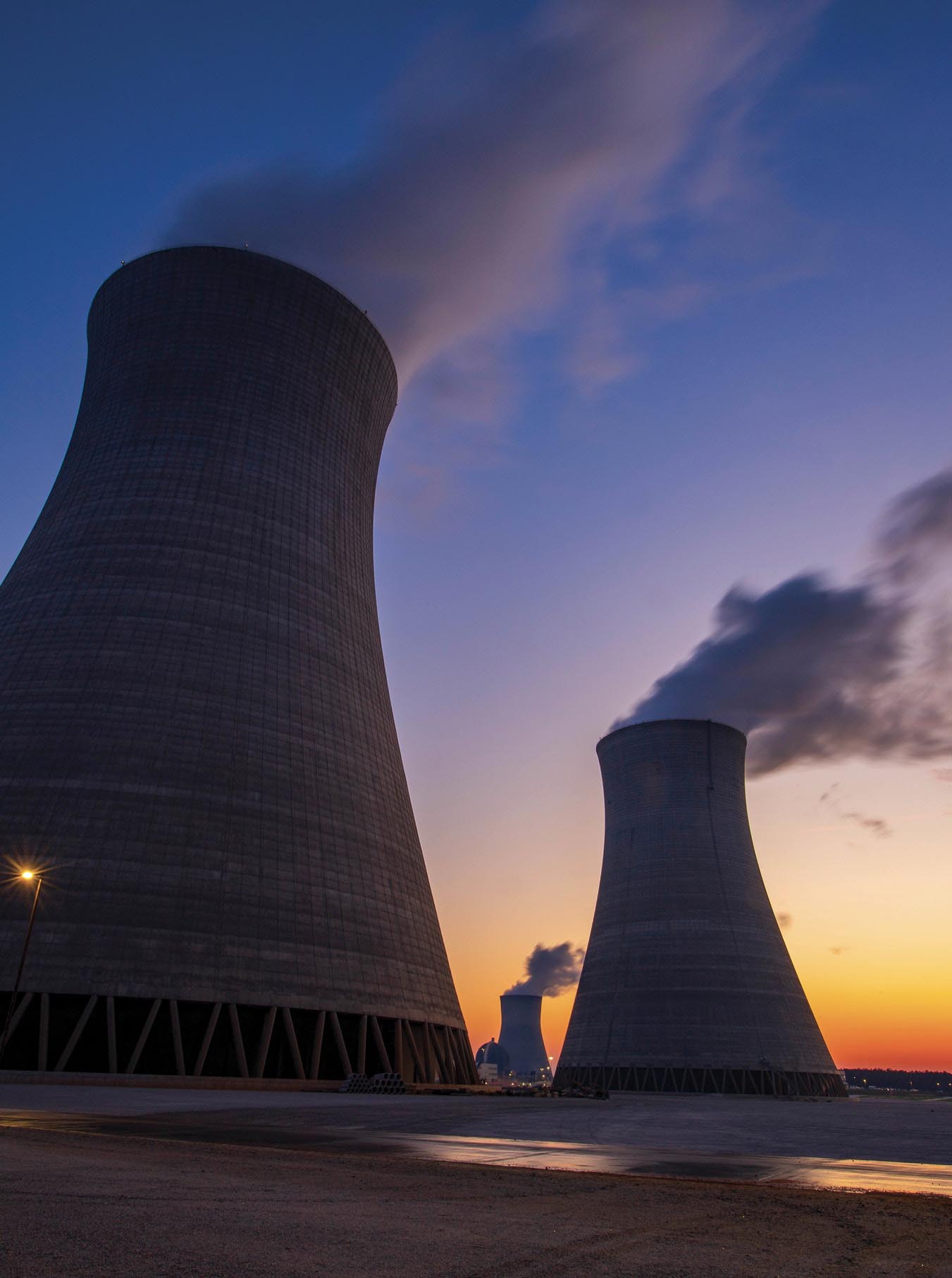What is nuclear energy’s role in mitigating climate change?
DOI: 10.1063/pt.odjy.wnyj
The US and two dozen other countries have pledged to triple the world’s nuclear energy capacity by 2050. Launched last fall at the United Nations Conference of the Parties (COP 28) in Dubai, the pledge is intended to help reach the goal of net-zero greenhouse gas emissions and limit global warming to 1.5 °C above preindustrial levels.
But is such a large increase in nuclear energy production feasible? Skeptics say that building nuclear reactors is too slow and costly to effectively mitigate climate change. And they say that security, safety, and proliferation risks need to be assessed in the context of today’s geopolitics. Proponents say that nuclear energy is necessary in the climate change equation and that to wield influence in the nuclear arena, the US and other Western nations must be at the forefront of nuclear energy development and exports.
Kathryn Huff was assistant secretary in the US Department of Energy’s Office of Nuclear Energy until May, when she rejoined the department of nuclear, plasma, and radiological engineering at the University of Illinois Urbana-Champaign. “We cannot meet our net-zero goal for the whole economy by 2050 without significant increase in nuclear power,” says Huff. “It’s not a statement of what is likely or probable. It’s a statement of what is necessary.”
Time, money, and nuclear energy
About 440 nuclear power reactors operate in 32 countries and Taiwan. They provide roughly 9% of electricity globally; in the US, that number is around 19%. China is building reactors at the fastest rate. Russia is the largest exporter of nuclear reactors; it is selling and setting them up in Egypt, Turkey, and other countries. Two commercial nuclear power reactors went on line in the past year at Plant Vogtle in Waynesboro, Georgia, bringing the US total number of operating reactors to 94.
In the drive to triple nuclear energy, some governments are giving much attention to small modular reactors (SMRs), which would produce a few hundred megawatts, making them about one-third the power of conventional gigawatt-scale reactors. Their appeal lies in the assumptions that they could be manufactured in assembly-line mode, which would keep costs down; could be distributed widely even to small users; and would have limited radiological release in an accident because of their size. Utilities or other customers could add to their stock of reactor modules as needed.
Historically, reactor projects in the US and other Western countries have been plagued by delays and cost overruns. The Vogtle reactors, for example, started up seven and eight years late and more than doubled in cost, from an initial estimate of $14 billion to a final cost of $34 billion. Ongoing projects in the UK, Finland, and France—the poster child for nuclear energy—are similarly late and more expensive than planned.

The Zaporizhzhya power plant in Ukraine has been targeted by Russia during the war. The incidents at the facility highlight the specter of increased potential for attacks—military and terrorist—on nuclear plants if more are built to tackle climate change.
INTERNATIONAL ATOMIC ENERGY AGENCY/CC BY 2.0

Ted Jones is senior director for national security and international programs at the Nuclear Energy Institute, a US-based nuclear industry trade association. The lowest-cost route to reducing greenhouse gas emissions involves nuclear energy, he says. To reduce US emissions by 95% by 2050, nuclear energy should be increased to provide 43% of US electricity needs, according to models he cites by the company Vibrant Clean Energy. The models also expand the contributions of wind and solar energy and battery storage. Tripling nuclear electricity production requires rebuilding the supply chain and stopping the cost and time overruns associated with reactor construction. “It will be hard,” he says, “but it’s realistic to believe it will improve.”
More reactors, more targets
Sharon Squassoni is a former US State Department analyst who is now a research professor of international affairs at George Washington University. The pledge to triple nuclear energy, combined with Russia’s attacks on the Zaporizhzhya nuclear power plant in Ukraine, prompted her to write the report New Nuclear Energy: Assessing the National Security Risks, which came out in April. More reactors around the world, she says, means more potential targets. And the danger is enhanced if those targets are in countries that have unstable governments.
In her report, Squassoni urges the US government to convene an international study on the national security risk of SMRs. She also says that the State Department should commission its International Security Advisory Board to study how national security risks posed by nuclear energy have changed over the last two decades. In addition to proliferation risks, she says, the study should assess nuclear terrorism, sabotage, and weaponization of nuclear power plants. She also recommends that the US weigh nuclear solutions to climate change against other low-carbon options.
Countries new to nuclear reactors will need to train workers. And the know-how and the access to uranium fuel could be diverted to weapons purposes, says Henry Sokolski, who previously worked at the Pentagon and is now executive director of the Nonproliferation Policy Education Center. He calls nuclear power plants “bomb starter kits.”
Economics and geopolitics
Dozens of SMR designs exist. They use various coolant types, including light water, liquid metal, high-temperature gas, and molten salt. For now, says Mark Jacobson, a professor of civil and environmental engineering at Stanford University, SMRs are still “vaporware. They don’t exist.” He and others note that historically, the size of reactors increased to get more electricity per dollar invested. Claims that the cost of electricity per plant will go down with SMRs “have not been validated,” says Sokolski. Last year NuScale Power’s plans to build a set of SMRs in Idaho to serve municipal utilities in Utah fell apart after the projected cost tripled.
Economics is what makes reactors so hard to realize, says Peter Bradford, who served on the Nuclear Regulatory Commission from 1977 to 1982, has chaired state utility regulatory commissions, and has taught courses on nuclear law and energy policy. The industry and the US government have a pattern, he says: “Every time a promised nuclear renaissance fails, they come up with some other reactor concept. SMRs are just the latest. But they never solve the cost problem.” Still, governments and the nuclear industry remain eager to commit immense sums of taxpayer and customer money, he says. “I scratch my head at that.”

Cooling towers at the Vogtle plant in Georgia, where two new reactors went on line in the past year. The plant hosts 4 of the now 94 operating reactors in the US. The reactors’ huge time and cost overruns exemplify challenges facing the expansion of nuclear capacity.
© 2024 GEORGIA POWER COMPANY

Many physicists support nuclear energy, says M. V. Ramana, a professor at the University of British Columbia’s School of Public Policy and Global Affairs. His focus is on nuclear energy, especially SMRs, and he has written a forthcoming book on nuclear energy and climate change. He was the lone critic on a panel discussion about SMRs at the American Physical Society’s April meeting, he says, and many in the audience were “less than open” to his views. He surmises that physicists “have a fundamental belief that the technology used to make nuclear weapons must also have a good use and that ‘we have to redeem ourselves by taming the atom.’ ”
Given the costs of reactors and the snail’s pace of construction, the tripling of nuclear energy is not going to happen, says Ramana. “It’s moot.” Instead, he sees the focus on nuclear energy as a distraction. “From the viewpoint of climate change,” he says, “reactors are a diversion, and the money from the government is money that could go to renewables and to energy storage.” At COP 28 in Dubai, 133 countries, including the US, committed to tripling the world’s installed renewable-energy generation by 2030.
But US commitments to build nuclear reactors are motivated both by climate change mitigation aims and by geopolitical influence. At a 23 April press conference on Squassoni’s recent report, Jane Nakano, a senior fellow in the program for energy security and climate change at the Center for Strategic and International Studies, said that for national security reasons and political influence, the US may have no choice but to pursue SMRs.
“If the US fails to build reactors, we will not only fail to meet climate goals, but we may cede our nuclear energy leadership to our adversaries,” says the University of Illinois’s Huff. “That does have real risks.” Leadership in nuclear technology allows the US to drive the global conversation about safety, safeguards, and security, she explains.
Ramana disagrees: “Such zero-sum thinking will ensure that the climate crisis becomes worse.”
More about the Authors
Toni Feder. tfeder@aip.org
